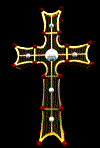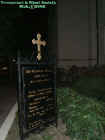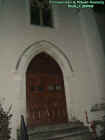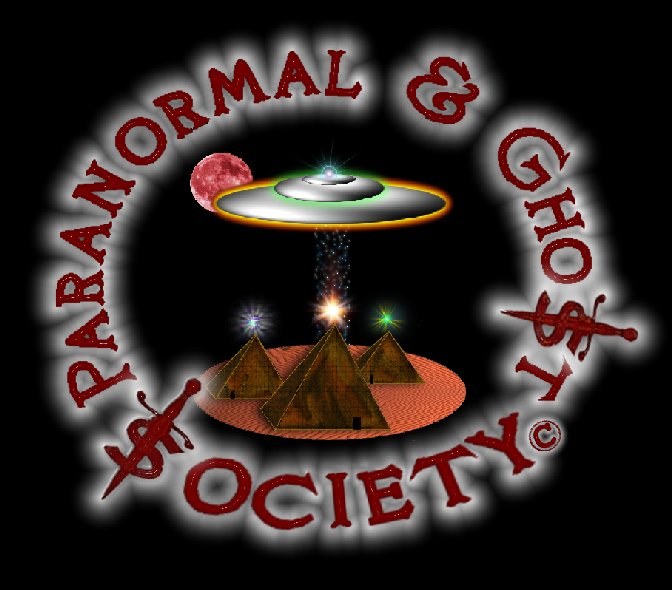| |



The Church was organized in 1869 and a small
sanctuary was built here in 1892 on the land purchased from R.R. Reid for
three hundred dollars at the time. It was eventually enlarged and expanded
in the 1890s and the name was changed from St. Luke's Parish to St. Luke's
Cathedral.
During the construction of the church I heard
rumors that some graves were found. Perhaps because before that time
Orlando did not have a cemetery and many people buried there loved ones
out in their back yard. So the church does sit on burial ground supposedly
for one which is one reason why we wanted to visit its site.
The present church building you see today was
designed by P.H. Frohman who also was the designer of the National
Episcopal Cathedral at Mount St. Alban in Washington D.C. The cathedral
was built for $130,000 in 1922 to 1926 which it would have a Spanish
Medieval and English Vertical Gothic Style. The concrete art stone
simulates carved limestone. In 1887 new renovations were made and the
cathedral was expanding when some drawings were found from 1925 which
would eventually make the cathedral complete.
Now taking a step back in history William
Crane Gray was elected and consecrated the first Bishop of South Florida.
He made Orlando his home and was responsible for the birth of St. Lukes
which became a cathedral church in 1902. Rev. Lucien A. Spence was
appointed the first Dean of the Cathedral. If you are familiar with Lake
Lucien you will notice it was named after him.
In 1922 the old cathedral building was moved
to the south side of the tract of land to make room for this new cathedral
and its cornerstone was laid by Bishop Mann in 1925. In 1926 only some of
the building had been constructed. With the depression there just was not
enough funding to complete the cathedral.
From 1971 Rev. Charles T. Gaskell became the
ninth Dean of the cathedral until he was consecrated in 1973 and a Bishop
Coadjutor of Milwaukee. However under his leadership the cathedral was
renovated and a choir gallery over the narthex and installation of a
88-rank pipe organ came to be. In 1986-87 the temporary wall was removed
and the cathedral building was finally complete like the original
plans.
Other then that you can read a more detailed
history below found on the cathedrals website shared for educational
purposes only.
I found the church to be a really beautiful
piece of architecture. Its very rare to see such gothic structures in the
heart of one of America's biggest cities. The church is quite gloomy there
is alot of energy of the past from Orlando's history. But one can imagine
roaming down its halls late at night with a candle in search of the
unseen. The area the church was built on was not only in an area where
graves had been found but also the site of a fort which served in the
Seminole War so as far as ghost go I am sure many different ones roam
inside these cathedral walls.
©
By
Rick-Angel_Of_Thy_Eternal_Eve








Cathedral
Detailed History
Florida was admitted to the Union in 1845. In 1867, the population of the
entire state was approximately 150,000; that of Orange County, 1,500,
concentrated mainly in two villages, Mellonville (now Sanford) and Orlando
(formerly called Jernigan until 1857). Most of the homes and stores in
Orlando were located between Lake Eola and Lake Lucerne.
Francis
Eppes, grandson of Thomas Jefferson, moved his family to Orlando from
Tallahassee, building a log cabin in the sparsely settled area. A Lay
Reader, he conducted the first Episcopal services in Orlando for his
neighbors. The stained glass window at the south stairs in the narthex of
the Cathedral honors the memory of Francis Eppes and his contribution to
the establishment of the Episcopal Church in Orlando.
In October 1892, General Convention set apart the Missionary Jurisdiction
of South Florida, and William Crane Gray was elected and consecrated first
Bishop. Bishop Cray made Orlando his home. Under his guidance, St. Luke's
was designated as the Cathedral Church for South Florida on March 31,1902.
The Rev. Lucien A. Spencer was appointed the first Dean of the
Cathedral.Bishop Gray retired in 19 1 0. On Ascension Day in that year, he
presented to the Cathedral as a thank offering a processional cross which
is still in use. The carved oak pulpit in the Cathedral is a memorial to
Bishop Gray.
The Rt. Rev. Cameron Mann, Bishop of North Dakota, succeeded Bishop Gray.
A series of Deans offered leadership that steadily advanced the growth of
the parish and its spiritual influence throughout the period of World War
I and the 1920's. At the General Convention of 1922, the Missionary
Jurisdiction of South Florida was admitted as a Diocese and the first
Diocesan Convention was held in the Cathedral in January, 1923.
In October, 1922, the old Cathedral building was moved to the south side
of the tract of land to make room for a glorious new Cathedral. It was
designed by the famous architects of the Washington Cathedral, the firm of
Frohman, Robb, and Little of Boston. The cornerstone was laid by Bishop
Mann on April 13,1925.
Because of the depression, which came to Florida in 1926, the building was
only partially constructed. A "temporary" wall sealed the altar
end. The first services were conducted in the new Cathedral on Easter
Even, April 3,1926, by Bishop Mann, when a large confirmation class was
presented to him.
The ensuing period presented severe economic hardships. Members of the
Cathedral parish made significant sacrifices to keep and maintain the
properties they had worked so hard to obtain.
John Durham Wing was elected and consecrated as Bishop Coadjutor on
September 25,1925. He succeeded Bishop Mann in 1932, and his installation
service was held in the Cathedral on May 12.
The Rev. Melville F. Johnson, student pastor at the University of Florida,
became the sixth Dean on January 1, 1 931 and served for twenty-two years.
He led the construction of the L-shaped educational unit, which stands
behind the present Chapter House. It was a memorial to members of the
Cathedral who died in World War II.
The Rev. Osborne R. Littleford became the Cathedral's seventh Dean in
1952. Under his leadership, the present Chapter House was erected and the
Cathedral parish grew steadily. At this time several of the suburban
churches were established, and many of the Cathedral families transferred
to them to help form a foundation for their growth.
In 1959, the Rev. Francis Campbell Gray became the eighth Dean and guided
the destiny of the Cathedral family for twelve years. During his tenure,
communicant strength reached a new high.
The Rt. Rev. Henry Irving Louttit, who had served as Suffragan from 1945
to 1948 and as Coadjutor from 1948 to 1950, directed the Diocese of South
Florida during its greatest period of growth and expansion. New parishes
proliferated. Diocesan communicant strength tripled. As he approached
retirement, machinery was set up through Convention to study the
possibility of dividing the Diocese of South Florida. This was
accomplished in 1970 when the old Diocese of South Florida was divided
into three dioceses. St. Luke's continued as the Cathedral Church for the
Diocese of Central Florida. Bishop Louttit served very briefly as its
first Bishop, succeeded by the Rt. Rev. William H. Folwell who retired in
1990. The Rt. Rev. John W. Howe followed Bishop Folwell and is the present
bishop of the Diocese of Central Florida.
In
January, 1971, the Rev. Charles T. Gaskell became the ninth Dean of the
Cathedral, serving until his consecration in June, 1973, as Bishop
Coadjutor of Milwaukee. Under Dean Gaskell's leadership the renovation of
the Cathedral nave, with the erection of the choir gallery over the
narthex and installation of the 88-rank pipe organ was achieved.
In September, 1973, the Rev. O'Kelley Whitaker, Rector of Emmanuel Church,
Orlando, became the tenth Dean. With Bishop Folwell's encouragement, under
Dean Whitaker's leadership, the Cathedral grew as a strong downtown
parish, became a center for Diocesan functions and an example of
excellence in worship, liturgical arts and music.
Dean Whitaker resigned after his election as Bishop Coadjutor of the
Diocese of Central New York in November, 1980. The Rev. George H. Back
(current Dean of the Cathedral in Oklahoma City) served as Interim Dean
for one year.
The
Rev. Harry B. Sherman, rector of St. Paul's Church, Patchogue, Long
Island, and Dean of Suffolk County in the Diocese of Long Island, accepted
the call to become the eleventh Dean of the Cathedral, beginning his
ministry at the Cathedral on September 1, 1981.
Through 1986 and 1987, the temporary wall which was constructed in 1926,
was removed and the Cathedral building was finally completed much as it
had been originally planned, The completed Cathedral includes an apse,
ambulatory, priests and working sacristies, a bell tower and the St. Mary
Chapel.
Under the leadership of The Very Rev. Dr. G. Richard Lobs III, the twelfth
dean, the Cathedral has experienced substantial spiritual and numerical
growth
For more information or questions, please contact the Cathedral Historian
and Archivist, Anne Michels, at amichels@stlukescathedral.org.
|
|











